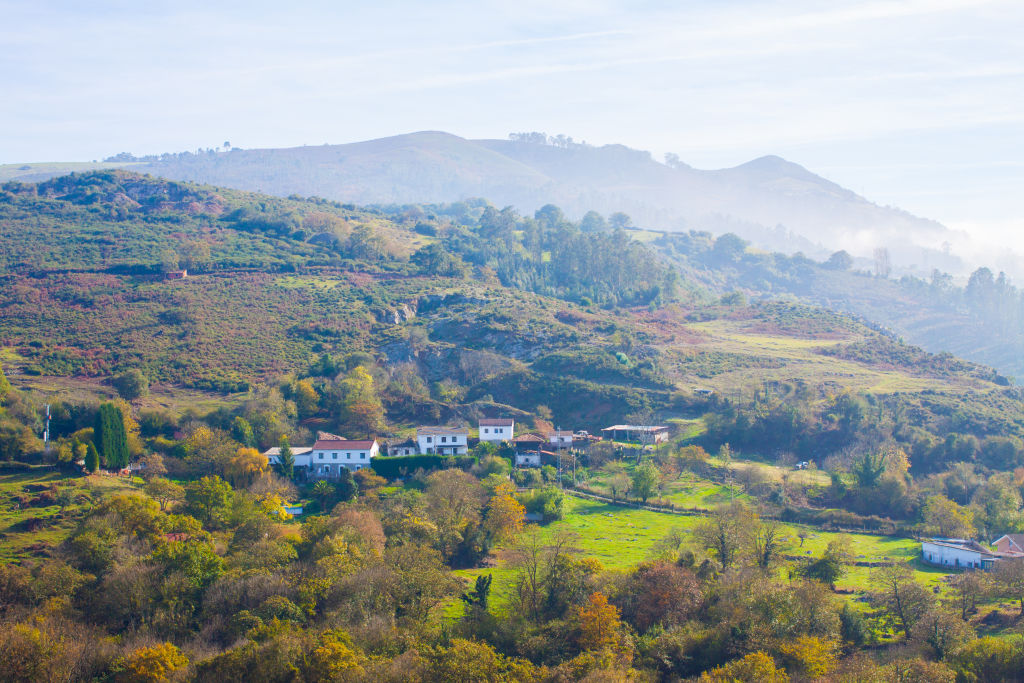Hundreds of Spanish 'ghost villages' hit the market for as little as $134,000

It turns out the phenomena of dying country towns is not unique to Australia, with hundreds of entire rural Spanish villages up for grabs.
Bloomberg has reported abandoned countryside hamlets are going for as little as $134,000.
Aging populations, declining birth rates and rapid urbanisation are the main reasons for “ghost villages” popping up all across Spain.
People like Gustavo Iglesias, who left his northern Spanish hamlet of La Corrada (nearly 500 kilometres north-west of Madrid), represent the demographic shift occurring in the country.
After his family resided in the countryside for generations, growing wheat and farming cattle, Mr Iglesias moved from the countryside to a bigger town for work.
The town had all but emptied out and abandoned by the time his father died 30 years ago.
Mr Iglesias now works as a port policeman in Burela, a fishing town on the Galician coast, and has teamed up with other owners in his hometown to put the rural hamlet up for sale— for just 85,000 euros (or $134,000) — in a bid to breathe life back into it.
“I’d like someone to buy it and do it up so that it continues to have a life,” Mr Iglesias told Bloomberg.
The 57-year-old is not alone as Spain’s countryside is reportedly dotted with hamlets sold by their abandoned owners.
One real estate agency sold 40 villages in 2018 with 90 per cent of sales snapped up by cashed-up foreign buyers.
But for Spanish Prime Minister Pedro Sanchez, the reversal of this rural flight has become one of his key policies.
“We need to be aware of the demographic winter that threatens a large part of our territory,” Mr Sanchez said. “Half of Spain’s municipalities have fewer than 1,000 inhabitants, and a large part of our territory is at risk of depopulation.”
University of Sydney geography professor Phil McManus said the issue of “depopulation” was not unique to any specific country.
“This will be an increasing phenomena,” Mr McManus said. “The increasing centralisation of services and the internet means there is less need for [country] towns to exist.”
Mr McManus said while some country towns could be rejuvenated depending on their proximity to larger and capital cities, governments were faced with hard choices.
“There is a possibility of bringing in services, new industries or tourist or cultural attractions. But we can’t have every town with it’s wheat silos painted,” he said.
“In some cases, we do have to accept that some towns have to go, people will get upset by it.
“We can’t support every town or hamlet in the same way [as] in the 1920s, pre-the advent of the automobile, the internet and online shopping. The dynamics have really changed.”
He said the success of reviving rural towns, be it Australia, New Zealand or Spain, was possible but depended on a number of factors.
In recent years, country towns a few hours from a major city have done well because they are the most in demand for tree-changers, as well as the rising popularity of people interested in weekenders, according to Mr McManus.
However, deeper rural towns have struggled more, Mr McManus said, because they were further from the coast and hotter, drier conditions due to climate change make them increasingly unattractive.
We recommend
We thought you might like
States
Capital Cities
Capital Cities - Rentals
Popular Areas
Allhomes
More







